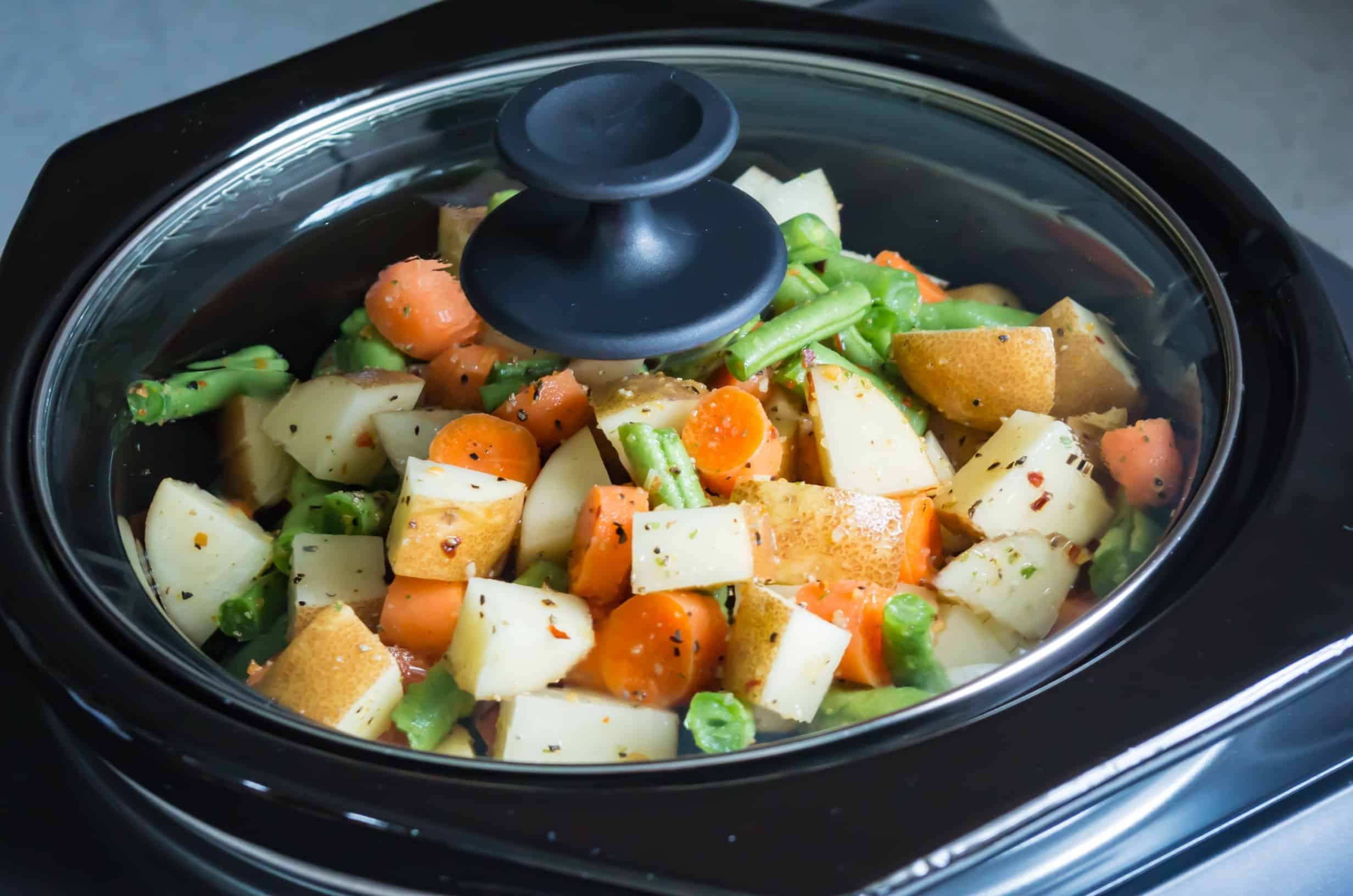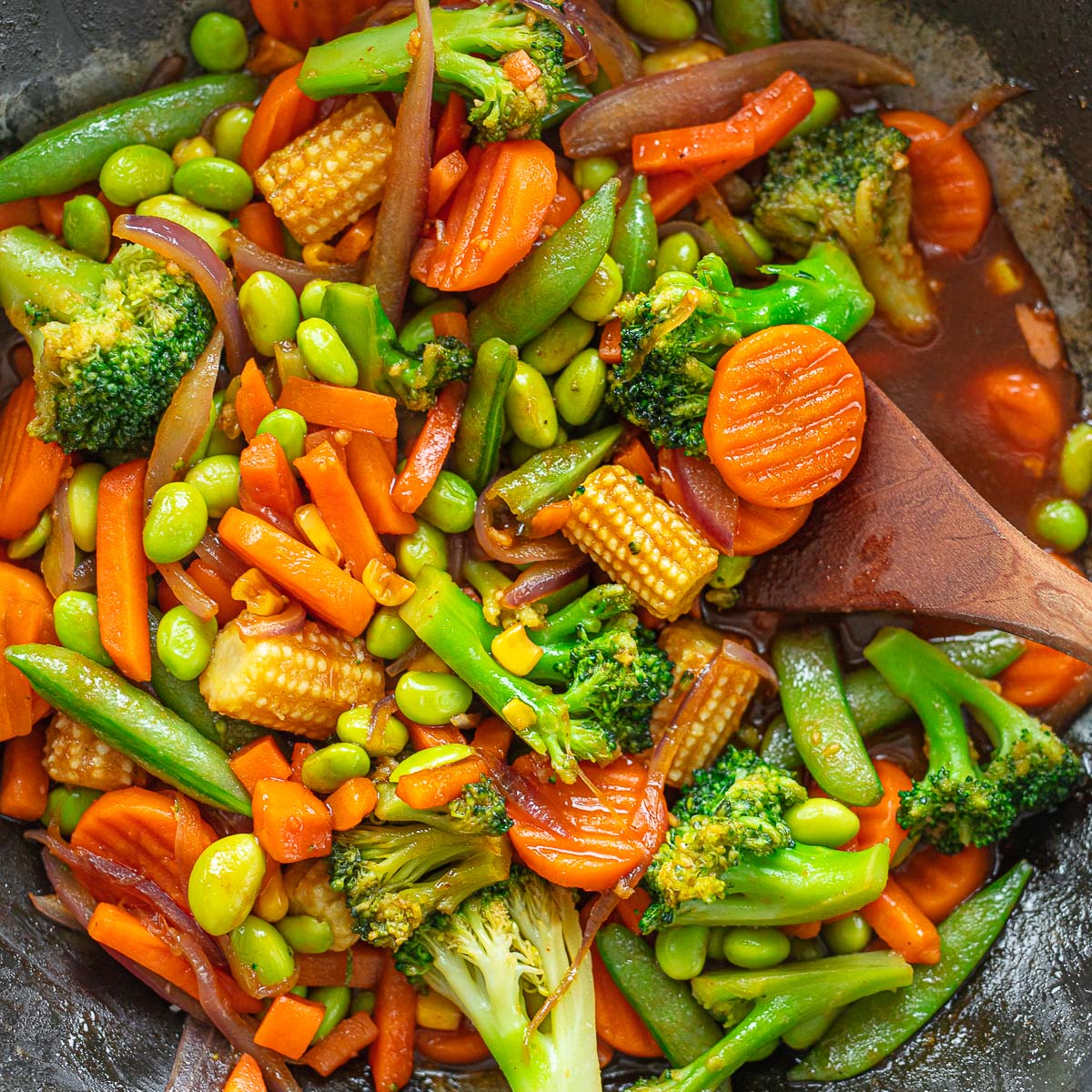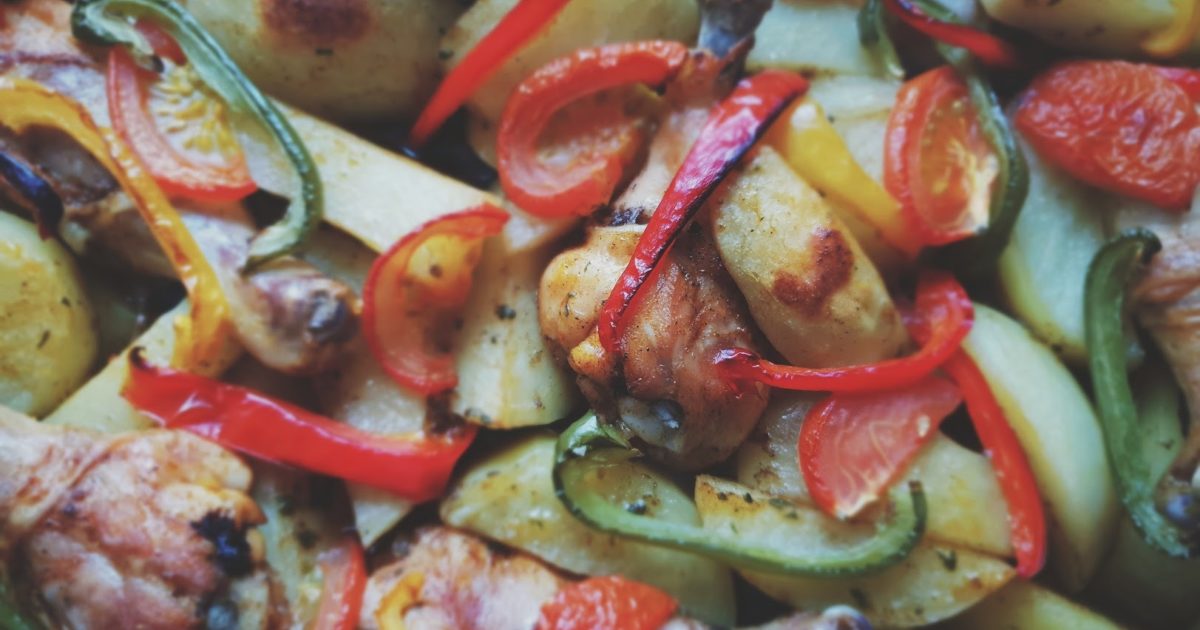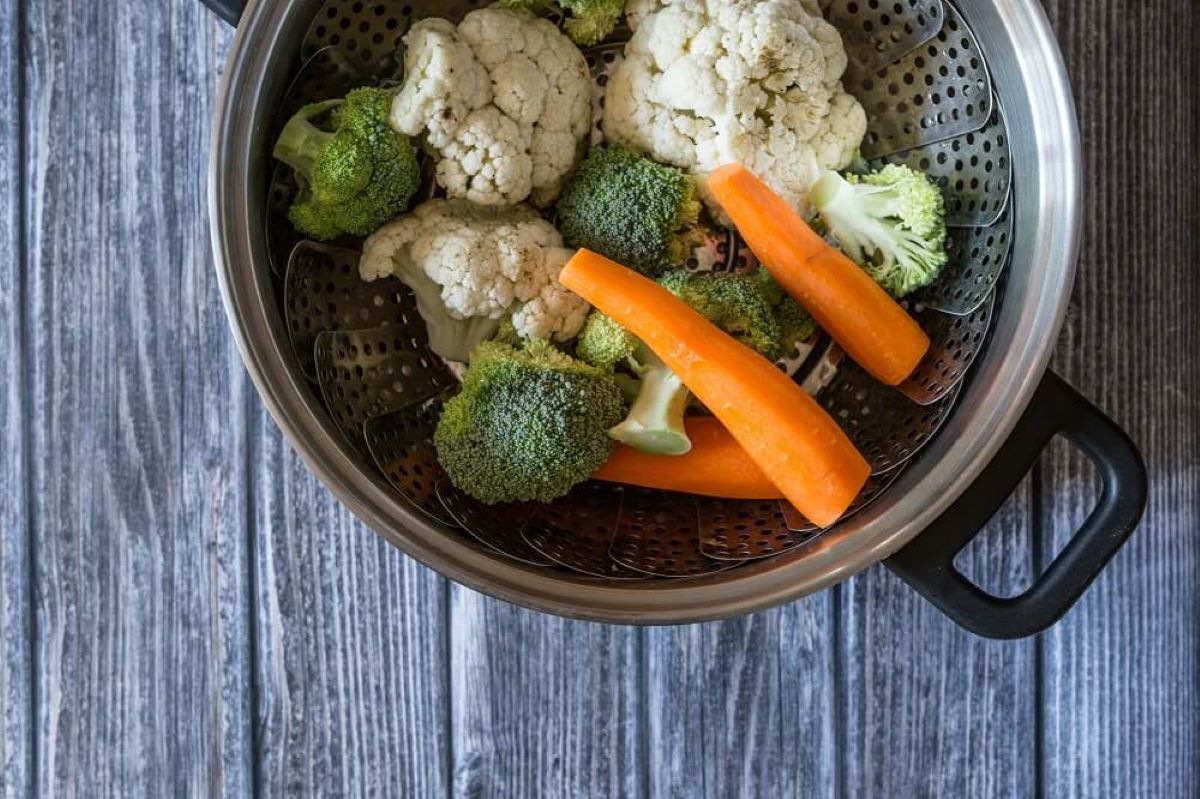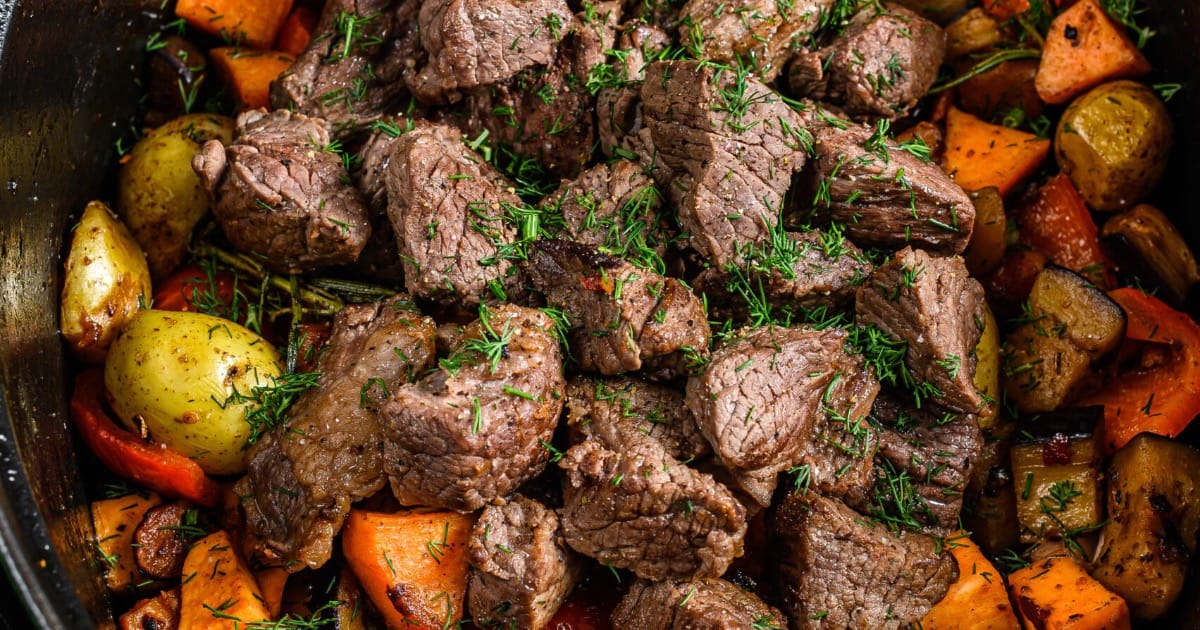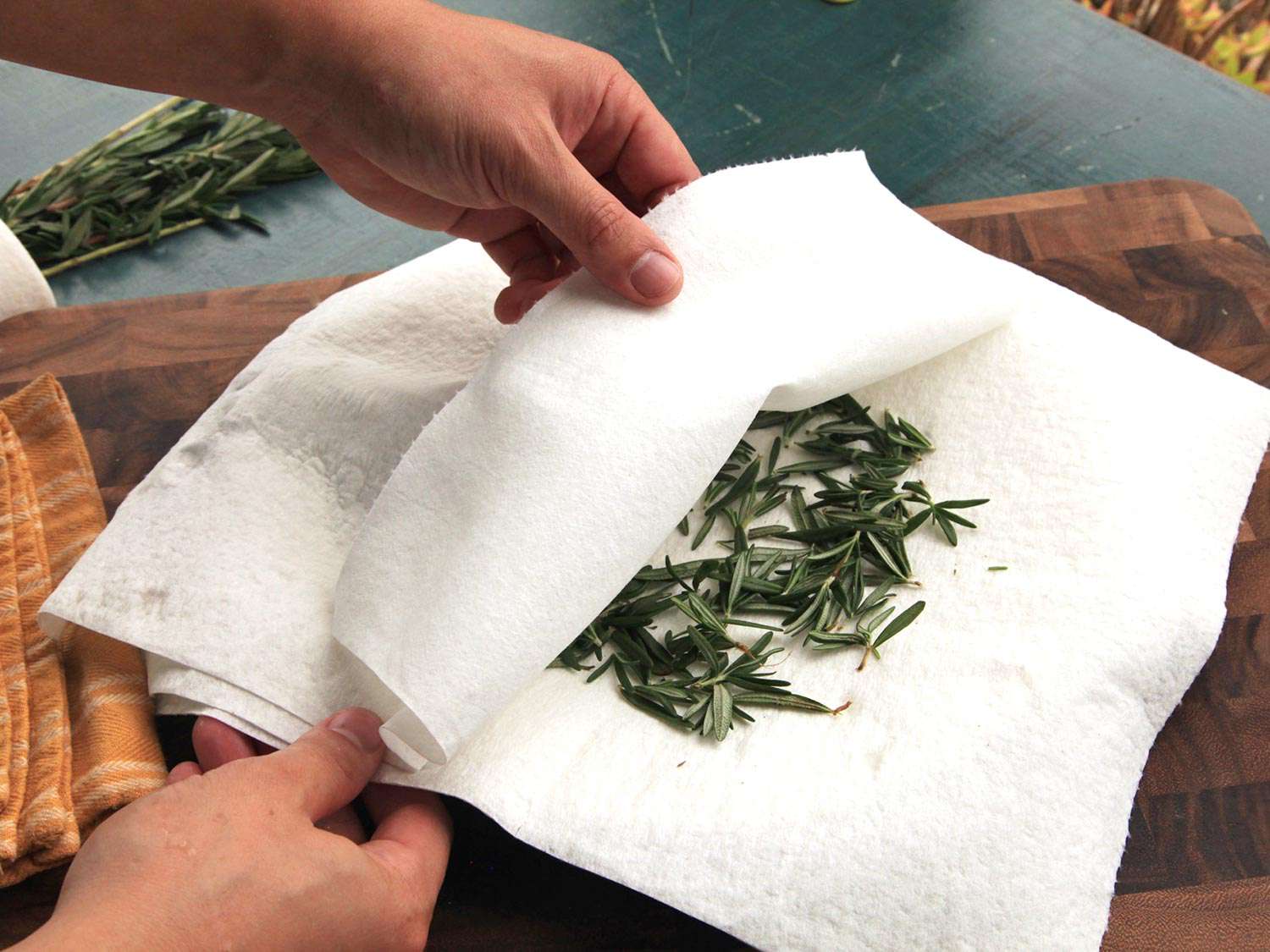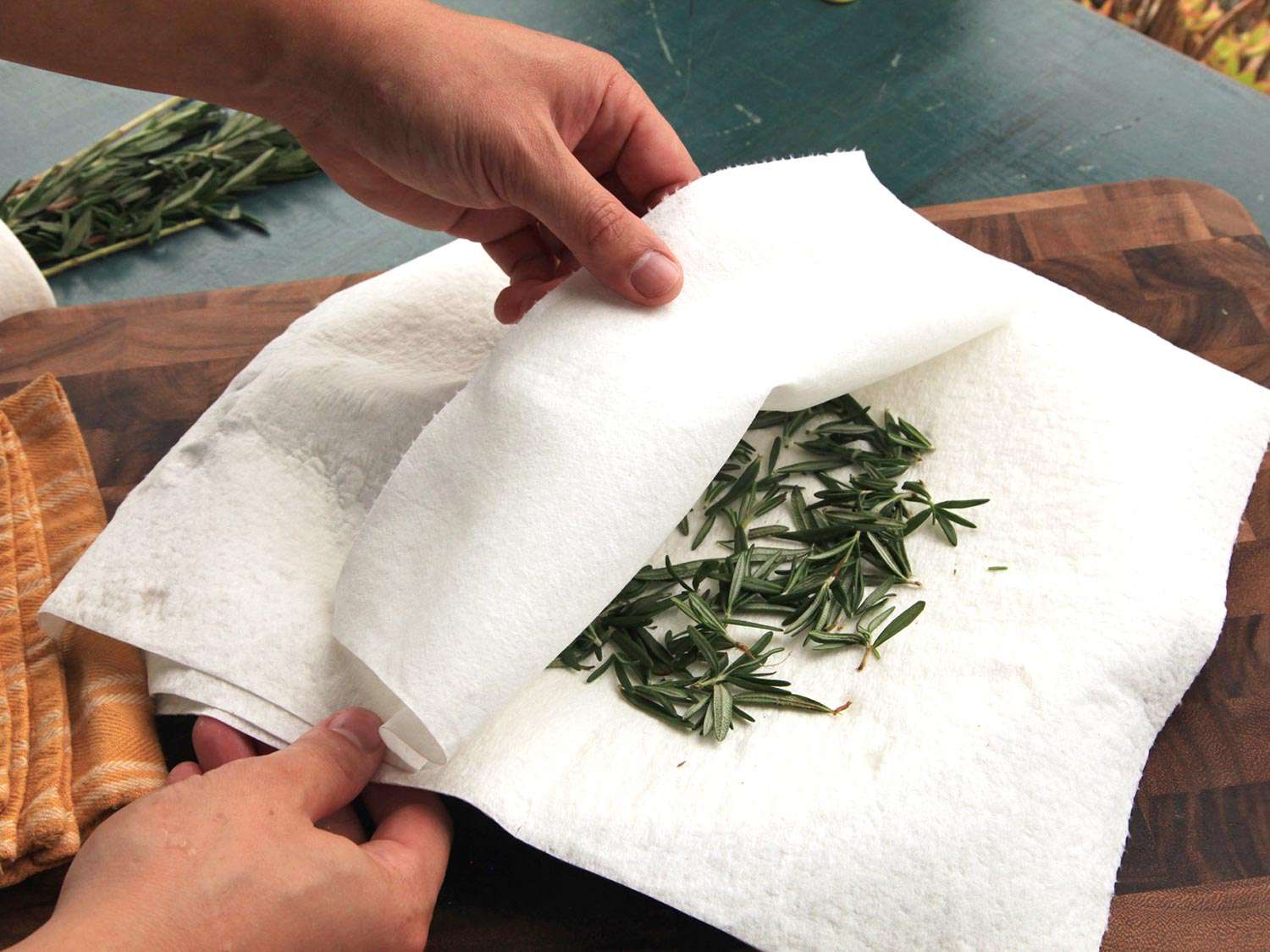Home>Gardening News and Trends>Latest News>How To Cook Vegetables In Microwave
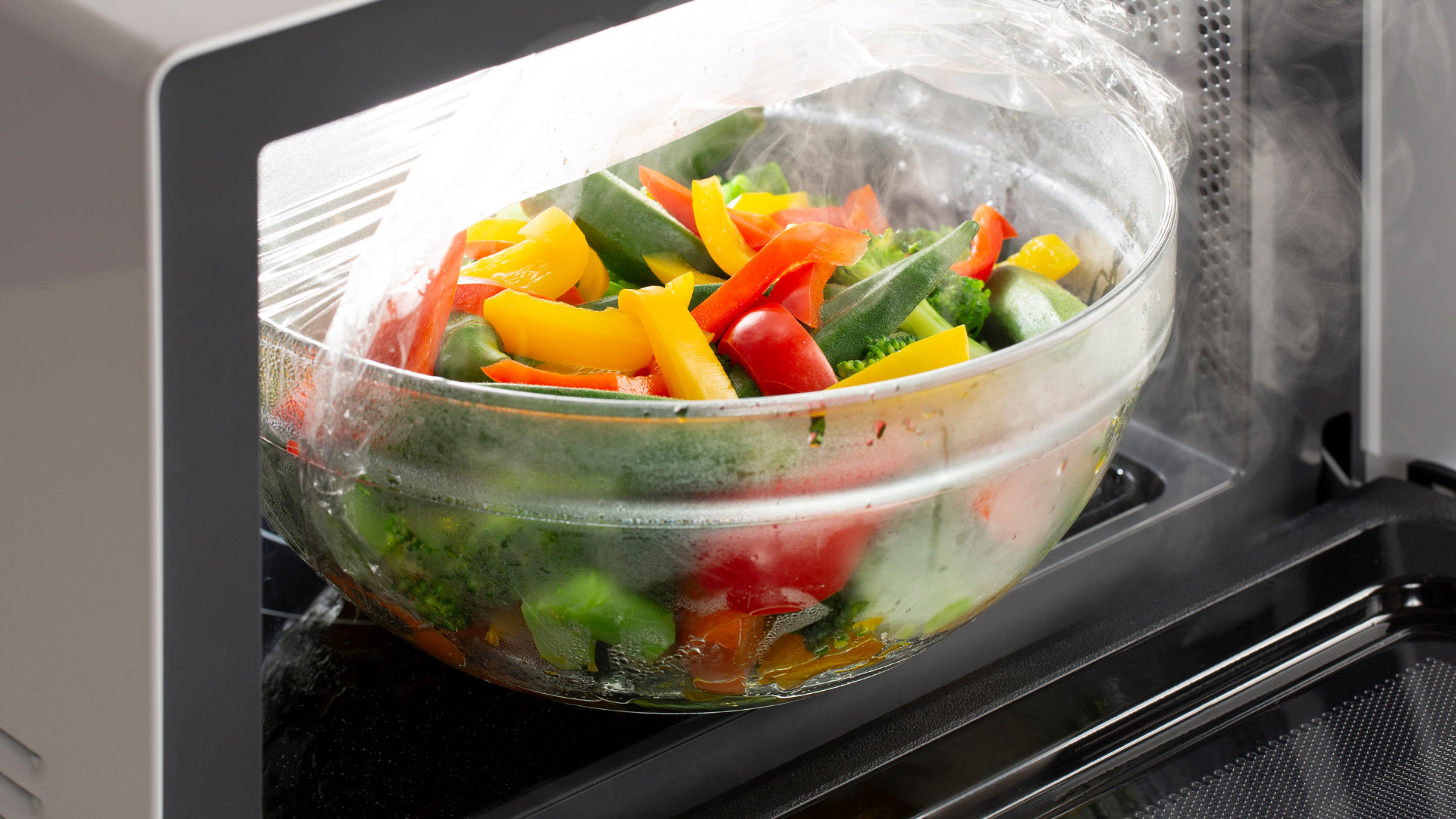

Latest News
How To Cook Vegetables In Microwave
Modified: January 22, 2024
Learn the latest news on how to cook vegetables in the microwave. Quick and easy methods for healthy and delicious meals ready in minutes.
(Many of the links in this article redirect to a specific reviewed product. Your purchase of these products through affiliate links helps to generate commission for Chicagolandgardening.com, at no extra cost. Learn more)
Table of Contents
- Introduction
- Benefits of Cooking Vegetables in the Microwave
- Choosing the Right Vegetables
- Tips for Preparing Vegetables for the Microwave
- Step-by-Step Guide: How to Cook Vegetables in the Microwave
- Recommended Cooking Times for Common Vegetables
- Seasoning and Flavoring Options
- Safety Precautions While Cooking in the Microwave
- Conclusion
Introduction
When it comes to cooking vegetables, most people immediately think of steaming, roasting, or boiling. However, there is another convenient and time-saving option that you may not have considered – using the microwave. Cooking vegetables in the microwave is a quick and efficient method that retains the nutrients and natural flavors of the vegetables.
In this article, we will explore the benefits of cooking vegetables in the microwave, provide tips for choosing the right vegetables and preparing them for microwaving, and guide you through the step-by-step process of cooking vegetables in the microwave. Whether you are a busy professional, a college student, or someone who simply wants a hassle-free cooking experience, the microwave can be your trusted companion.
One of the greatest advantages of cooking vegetables in the microwave is the time-saving factor. Unlike other cooking methods that can take anywhere from 15 to 45 minutes, microwaving vegetables requires only a few minutes. This is especially beneficial for those with a busy lifestyle or limited time for meal preparation.
Furthermore, microwaving vegetables helps to preserve their nutrients. Traditional cooking methods like boiling can cause water-soluble vitamins to leach out into the cooking water, resulting in nutrient loss. Microwaving, on the other hand, requires minimal water and reduces the chances of nutrient depletion. Additionally, the quick cooking time of the microwave also helps to retain the vibrant colors of the vegetables, making them visually appealing.
Moreover, microwaving vegetables requires little to no added fats or oils, making it a healthier cooking option. With other methods, such as frying or sautéing, the vegetables often soak up oil, adding unnecessary calories and saturated fats to your dish. By using the microwave, you can enjoy the natural flavors of the vegetables without the extra fats.
In the next sections, we will delve into more details on choosing the right vegetables, preparing them for the microwave, and providing step-by-step guidance on cooking vegetables to perfection. Let’s get started on this exciting journey of microwave cooking and discover a new, convenient way to enjoy delicious and nutritious vegetables.
Benefits of Cooking Vegetables in the Microwave
Microwaving vegetables offers numerous benefits that make it an appealing cooking method. Here are some of the advantages of using the microwave to cook your vegetables:
- Time-saving: One of the major benefits of cooking vegetables in the microwave is the time it saves. Unlike other cooking methods that can take significant amounts of time, microwaving vegetables is quick and efficient. With just a few minutes of cooking time, you can have perfectly cooked vegetables on your plate.
- Nutrient retention: Microwaving vegetables helps to retain their nutrients better than some other cooking methods. Water-soluble vitamins, such as vitamin C and B vitamins, are particularly susceptible to heat and can be lost during prolonged cooking. The quick cooking time of the microwave helps to preserve these vital nutrients, ensuring you get the maximum nutritional benefits from your vegetables.
- Preservation of color and texture: Another advantage of microwaving vegetables is that it helps to maintain the vibrant colors and crispness of the vegetables. Traditional cooking methods, such as boiling, can often cause the colors of the vegetables to fade and the texture to become mushy. In contrast, microwaving retains the natural colors and textures, making your vegetables visually appealing and enjoyable to eat.
- Energy-efficient: Microwaving vegetables is a more energy-efficient cooking method compared to using the stove or oven. The microwave uses less energy to cook food, saving you money on your utility bills. It is also a great choice for those who are conscious about their environmental impact.
- No addition of fats or oils: When you cook vegetables in the microwave, you don’t need to add extra fats or oils. Other cooking methods, such as frying or sautéing, often require additional fats, which can contribute to unnecessary calories and saturated fats. By using the microwave, you can enjoy the natural flavors and textures of your vegetables without the need for added fats.
With these benefits in mind, it’s clear that microwaving vegetables is a convenient, time-saving, and nutritious way to prepare your favorite vegetables. The next sections will provide you with valuable tips on selecting the right vegetables, preparing them, and cooking them to perfection in the microwave.
Choosing the Right Vegetables
When it comes to microwaving vegetables, not all are created equal. Some vegetables are better suited for this cooking method, while others may not yield the best results. Here are some tips for selecting the right vegetables to microwave:
- Dense and firm vegetables: Vegetables that are dense and firm tend to cook well in the microwave. Examples include broccoli, carrots, cauliflower, Brussels sprouts, and asparagus. These vegetables hold their shape during cooking and maintain a pleasant texture.
- Uniform size: It is best to choose vegetables that are of a similar size for even cooking. This ensures that all pieces cook at the same rate, preventing some from becoming overcooked while others remain undercooked. If necessary, you can cut larger vegetables into smaller, uniform pieces.
- Moisture content: Vegetables with a higher moisture content tend to fare better in the microwave. This is because microwaving relies on the moisture within the vegetables to generate steam and cook them. Vegetables like zucchini, summer squash, eggplant, and bell peppers are good options.
- Leafy greens: While leafy greens like spinach and kale can be microwaved, they may become wilted and lose some of their texture. It is best to blanch these greens briefly in boiling water before microwaving to preserve their vibrant color and texture.
- Sensitive vegetables: Some vegetables are more delicate and may not be suitable for microwaving. Vegetables like lettuce, cucumber, and mushrooms tend to become soggy when microwaved. These vegetables are better enjoyed raw or prepared using other cooking methods.
When selecting your vegetables, choose fresh, high-quality produce for the best flavor and texture. Look for vegetables that are free from blemishes and have vibrant colors. If possible, opt for organically grown vegetables to reduce exposure to pesticides.
Now that you know which vegetables are best suited for microwaving, the next section will provide you with practical tips for preparing the vegetables before they go into the microwave.
Tips for Preparing Vegetables for the Microwave
Proper preparation is key to achieving delicious and evenly cooked vegetables in the microwave. Follow these tips to ensure your vegetables are ready for microwaving:
- Wash the vegetables: Before cooking, it’s important to thoroughly wash the vegetables to remove any dirt or contaminants. Use a vegetable brush or your hands to gently scrub the surfaces of the vegetables under cold running water.
- Trim and cut: Remove any tough stems, woody ends, or damaged parts of the vegetables. For larger vegetables like broccoli or cauliflower, break them into florets of similar size. For vegetables like carrots or zucchini, slice them into uniform pieces or sticks to ensure even cooking.
- Pierce or score dense vegetables: For dense vegetables like potatoes or squash, it’s beneficial to pierce them with a fork or make shallow scores with a knife. This allows steam to escape during microwaving and prevents the vegetables from bursting or becoming too soft.
- Add moisture: Vegetables with lower moisture content, such as broccoli or cauliflower, may benefit from a slight spritz of water before microwaving. This helps to create steam and keeps the vegetables moist during cooking.
- Use microwave-safe containers: Transfer the prepared vegetables to microwave-safe containers or dishes. Glass or ceramic dishes are excellent options, but make sure they are labeled as safe for microwave use. Avoid using plastic containers unless they are specifically labeled as microwave-safe.
- Cover the dish: To prevent splattering and retain moisture, cover the dish with a microwave-safe lid or use microwave-safe plastic wrap with a few vent holes. This helps to create a semi-sealed environment, allowing the vegetables to steam and cook evenly.
- Arrange the vegetables evenly: Spread the vegetables in a single layer inside the dish, ensuring they are evenly distributed. Avoid piling the vegetables on top of each other, as this can lead to uneven cooking.
By following these preparation tips, you will set yourself up for success in microwaving vegetables. Now that your vegetables are ready, it’s time to move on to the next section, where we will guide you through the step-by-step process of cooking them in the microwave.
Step-by-Step Guide: How to Cook Vegetables in the Microwave
Now that your vegetables are prepared, it’s time to learn the step-by-step process of cooking them in the microwave. Follow these simple steps for perfectly cooked vegetables:
- Place the prepared vegetables in a microwave-safe dish: Transfer the vegetables to a microwave-safe dish, ensuring they are spread out evenly and not stacked on top of each other.
- Add a small amount of water, if necessary: If you’re cooking vegetables with lower moisture content, like broccoli or cauliflower, you may want to add a few tablespoons of water to the dish. This helps create steam and prevents the vegetables from drying out.
- Cover the dish: Cover the dish with a microwave-safe lid or use microwave-safe plastic wrap with a few vent holes. This helps to trap the steam and promote even cooking.
- Set the cooking time: Refer to the recommended cooking times for different vegetables (which we’ll cover in the next section) or use a microwave cooking chart as a general guide. Set the cooking time accordingly.
- Start microwaving: Place the dish in the microwave and start cooking on high power. Ensure that the turntable is rotating if your microwave has one, as this helps to distribute the heat evenly.
- Pause and stir: If your microwave doesn’t have a turntable, pause halfway through the cooking time and give the vegetables a gentle stir. This ensures even cooking and prevents hot spots.
- Check for doneness: When the cooking time is up, carefully remove the dish from the microwave (using oven mitts or a towel, as the dish will be hot) and check the vegetables for doneness. They should be tender but still have a slight bite to them.
- Let the vegetables rest: Allow the vegetables to rest in the covered dish for a minute or two. This helps to complete the cooking process and allows the flavors to develop.
- Season and serve: Remove the cover from the dish, season the vegetables with your favorite herbs, spices, or sauces, and serve them while they’re still warm.
By following these step-by-step instructions, you can easily cook a variety of vegetables in the microwave. In the next section, we will provide you with recommended cooking times for common vegetables to make the process even more convenient.
Recommended Cooking Times for Common Vegetables
Microwaving vegetables requires precise cooking times to ensure they are cooked to perfection. Here are some recommended cooking times for common vegetables:
- Broccoli: Florets of medium size typically cook in 4-6 minutes on high power.
- Carrots: Sliced or chopped carrots usually take around 3-5 minutes on high power.
- Cauliflower: Florets of medium size cook in 4-6 minutes on high power.
- Zucchini: Sliced zucchini can be cooked in 2-3 minutes on high power.
- Green Beans: Trimmed green beans usually cook in 3-5 minutes on high power.
- Asparagus: Thin asparagus spears take about 2-4 minutes on high power.
- Sweet Potatoes: Small to medium-sized sweet potatoes can be cooked in 6-8 minutes on high power. Remember to pierce them with a fork before microwaving.
- Spinach: Fresh spinach leaves can be microwaved for 1-2 minutes on high power until wilted.
- Corn on the cob: Wrapped in a damp paper towel, corn on the cob can be microwaved for 4-6 minutes on high power.
- Peas: Fresh or frozen peas can be cooked in 2-4 minutes on high power.
Keep in mind that cooking times may vary depending on the wattage of your microwave, the size of the vegetables, and personal preferences for tenderness. It’s always a good practice to start with the shorter end of the recommended cooking time range and check for doneness. You can always add additional cooking time if needed.
By following the recommended cooking times, you can enjoy perfectly cooked vegetables with vibrant colors and delicious flavors. In the next section, we will explore different seasoning and flavoring options to enhance the taste of your microwaved vegetables.
Seasoning and Flavoring Options
Microwaved vegetables have a natural sweetness and tenderness that can be enhanced with the right seasonings and flavorings. Here are some options to add delicious flavors to your microwaved vegetables:
- Simple seasoning: Start by seasoning your vegetables with a pinch of salt and pepper for a basic and classic flavor. This allows the natural taste of the vegetables to shine.
- Herbs and spices: Experiment with different herbs and spices to add depth and complexity to your vegetables. Basil, thyme, rosemary, oregano, and garlic powder are excellent choices that complement a wide range of vegetables.
- Citrus zest: Add a burst of freshness by grating some citrus zest, such as lemon or lime, over your microwaved vegetables. The bright citrus flavors can elevate the taste and provide a tangy twist.
- Infused oils: Drizzle your microwaved vegetables with a dash of infused oils, such as garlic-infused olive oil or chili-infused oil. These can add a hint of flavor and a touch of richness.
- Soy sauce or tamari: For an umami punch, toss your cooked vegetables with a small amount of soy sauce or tamari. These sauces can add depth and savory notes to your dish.
- Balsamic glaze: Drizzle some balsamic glaze over your microwaved vegetables for a touch of sweetness and tanginess. This can elevate the flavor profile and make your dish more sophisticated.
- Parmesan cheese: Sprinkle some freshly grated Parmesan cheese over your hot vegetables to add a nutty and salty kick. The cheese will melt slightly, creating a delightful flavor combination.
- Toasted nuts or seeds: Add a crunchy texture and nutty flavor by sprinkling some toasted nuts or seeds, such as almonds, walnuts, sunflower seeds, or sesame seeds, on top of your microwaved vegetables.
- Sauce or dressing: Toss your cooked vegetables with a light sauce or dressing of your choice. Options like vinaigrettes, tahini sauce, or peanut sauce can add creaminess and a burst of flavor.
Remember to taste your vegetables before adding additional seasoning, as some vegetables may already have a naturally sweet or earthy flavor. Adjust the seasonings according to your palate.
By exploring different seasoning and flavoring options, you can create a variety of delicious microwaved vegetable dishes that cater to your taste preferences. In the next section, we will discuss some safety precautions to keep in mind while cooking in the microwave.
Safety Precautions While Cooking in the Microwave
Cooking in the microwave is generally safe and convenient, but it’s important to follow a few safety precautions to ensure a smooth and incident-free experience. Here are some guidelines to keep in mind:
- Use microwave-safe containers: Always use microwave-safe containers and dishes that are labeled as safe for use in the microwave. Avoid using materials such as metal, aluminum foil, or plastic containers that are not microwave-safe, as they can cause damage to the appliance or release harmful substances.
- Avoid tightly sealed containers: When microwaving food, do not tightly seal containers or cover them with non-vented plastic wrap. This can cause pressure to build up and result in hot liquid or food exploding when the container is opened.
- Stir and rotate: To promote even cooking, pause and stir the food halfway through the cooking process, especially for dishes with thicker consistency. If your microwave does not have a turntable, rotating the dish can also help distribute the heat more evenly.
- Be cautious of steam: When removing the cover from a dish after microwaving, do so carefully and away from your face to avoid being scalded by the escaping steam. Use oven mitts or a towel to protect your hands from the heat.
- Allow for resting time: After microwaving, let the food or dish sit in the microwave for a short period to allow the heat to distribute evenly. This helps to avoid burning yourself by handling hot containers or utensils immediately.
- Monitor cooking time: Be attentive to the recommended cooking times to avoid overcooking or overheating your food. Overcooking can cause food to become dry or lose its texture, while overheating can lead to potential fire hazards.
- Handle hot dishes with care: Always use oven mitts or a towel to handle hot dishes when removing them from the microwave. Even if the dish itself does not feel hot, the contents may be hot and can cause burns if mishandled.
- When in doubt, start with shorter cooking times: If you are unsure about the appropriate cooking time for a particular dish or food item, start with a shorter cooking time and adjust accordingly. This prevents the risk of overcooking or burning the food.
- Clean spills and splatters: Accidents happen, and food may splatter or spill inside the microwave during the cooking process. Promptly clean any spills or splatters to prevent them from hardening and potentially interfering with the microwave’s performance.
By following these safety precautions, you can enjoy the benefits of microwave cooking while ensuring a safe cooking environment in your kitchen. Now that you’re aware of the safety measures, let’s conclude our article on cooking vegetables in the microwave.
Conclusion
Using the microwave to cook vegetables is a convenient and time-saving method that allows you to enjoy nutritious and delicious dishes. As we’ve discussed throughout this article, there are numerous benefits to microwaving vegetables. It saves time, retains nutrients, preserves colors and textures, requires minimal added fats or oils, and is energy efficient.
By choosing the right vegetables and properly preparing them, you can ensure that they cook evenly and retain their natural flavors. Seasoning and flavoring options offer endless possibilities to enhance the taste of microwaved vegetables according to your preferences.
However, it’s crucial to keep safety precautions in mind to avoid accidents or damage. Using microwave-safe containers, being cautious of steam, monitoring cooking times, and handling hot dishes with care are essential to maintain a safe cooking environment.
So next time you want a quick, healthy, and hassle-free vegetable dish, consider reaching for your microwave. Experiment with different vegetables, seasonings, and cooking times to discover your favorite combinations. With the tips and guidelines provided in this article, you can confidently embark on your microwave cooking journey and create delightful vegetable dishes in no time.
Happy microwaving and enjoy your vibrant and nutritious vegetables!
